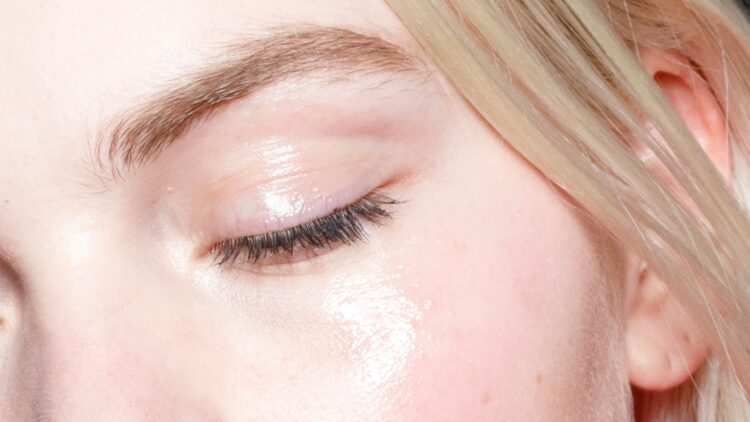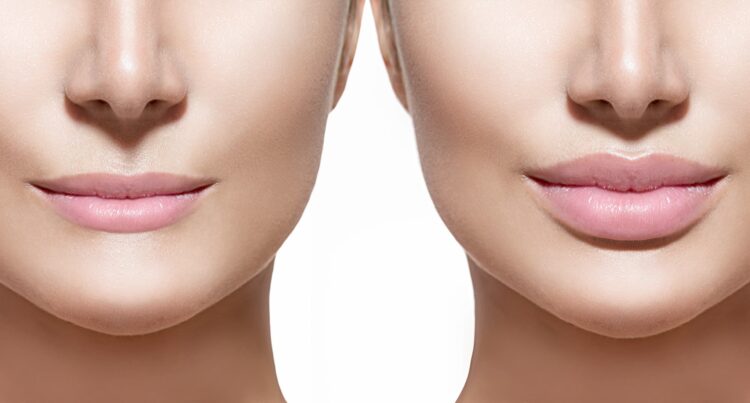Dermal fillers have revolutionized the field of cosmetic treatments, offering effective solutions for various skin concerns. These injectable substances work by replenishing lost volume, smoothing wrinkles, and rejuvenating the skin’s appearance.
Among the most popular fillers are Hyaluronic Acid (HA) and Calcium Hydroxylapatite (CaHA). Understanding the properties and differences between these two options is essential for making informed decisions about the best filler for individual needs. So, let’s delve into the world of dermal fillers and explore the benefits of each!
Page Contents
Hyaluronic Acid (HA) Explained: Properties and benefits for skin rejuvenation

Source: glamourmagazine.co.uk
Hyaluronic Acid is a naturally occurring substance found in our skin, joints, and connective tissues, making it a sought-after ingredient in dermal fillers for skin rejuvenation. Its remarkable ability to retain water makes it an ideal choice for achieving a youthful and radiant appearance.
HA fillers, like those offered at ‘Dermal Fillers in Glasgow,’ are skillfully used to plump and hydrate the skin, effectively smoothing fine lines and enhancing facial contours. The biocompatibility of HA ensures that allergic reactions are rare, making it suitable for most individuals seeking non-invasive cosmetic treatments.
Additionally, the temporary nature of HA stuffing grants patients the freedom to modify their treatments as their aesthetic goals evolve over time, ensuring a personalized and satisfying experience.
Calcium Hydroxylapatite (CaHA) Overview: How it differs from HA fillers

Source: katalystwellness.com
Calcium Hydroxylapatite (CaHA) stands out as a distinct dermal filler option, setting itself apart from Hyaluronic Acid (HA) contents in several ways. Unlike HA, CaHA is not naturally occurring in the body; it consists of microscopic calcium particles suspended in a gel-like solution.
The unique composition of CaHA provides immediate volume upon injection, effectively addressing deeper wrinkles, folds, and areas with significant tissue loss. What truly sets CaHA apart is its ability to stimulate collagen production over time, further enhancing the results and prolonging the effects of the treatment.
As a semi-permanent fill, CaHA offers longer-lasting outcomes compared to HA contents. However, it’s essential to consider individual preferences and consult with a qualified professional to determine the most suitable dermal fill for specific cosmetic goals.
The Science Behind HA Fillers: Mechanism of action and safety profile.
HA fillers work by binding with water molecules, creating volume beneath the skin’s surface. This mechanism of action not only smooths wrinkles and lines but also improves skin texture and elasticity.
As a biodegradable substance, HA eventually breaks down naturally within the body, making it a safe and reversible option.
Furthermore, HA treatments can be adjusted or reversed using hyaluronidase, an enzyme that dissolves the fill if necessary, offering an additional layer of safety and control for patients.
CaHA Fillers: Understanding its unique composition and mode of action.

Source: pinterest.com
Calcium Hydroxylapatite, when injected, provides immediate volume to the treated area. Over time, the calcium particles stimulate the body’s natural collagen production, further enhancing the results and contributing to the longevity of the treatment.
This collagen-building effect not only prolongs the benefits of CaHA stuffing but also improves the skin’s overall texture and firmness. It is crucial to note that, unlike HA, CaHA cannot be dissolved with hyaluronidase, making it a semi-permanent option.
Ideal Candidates for HA Fillers: Who can benefit most from this treatment?
HA fillers are a versatile option suitable for a wide range of individuals. Candidates seeking to address mild to moderate wrinkles, add volume to facial features, or improve skin hydration can benefit from HA treatments.
Since HA is naturally occurring in the body, it poses minimal risk of allergic reactions or adverse effects.
Ideal candidates are those seeking a non-permanent solution, allowing them to refine their appearance over time or try different treatments without long-term commitments.
Suitable Candidates for CaHA Fillers: Identifying those best suited for this option

Source: pinterest.com
CaHA fillers are well-suited for individuals with deeper lines and folds or significant volume loss. It is particularly effective for treating nasolabial folds, marionette lines, and other age-related concerns.
Patients looking for longer-lasting results and a semi-permanent solution may find CaHA fill more appealing. However, since CaHA is not naturally present in the body, an initial skin test is necessary to ensure no adverse reactions occur.
Comparing Longevity: The duration of results for HA vs. CaHA fillers.
The longevity of dermal fillers is a critical factor to consider when choosing between HA and CaHA. HA contents typically last between 6 to 18 months, depending on the product used and individual factors.
In contrast, CaHA stuffing can provide results lasting up to 12 to 18 months longer than HA, making it a preferable choice for individuals seeking longer-lasting effects without frequent touch-ups.
Safety Considerations: Potential risks and side effects of each dermal filler type.
Both HA and CaHA insides are generally safe when administered by qualified and experienced professionals. Common side effects for both types may include redness, swelling, bruising, and mild discomfort at the injection site.
These effects are temporary and subside within a few days. In rare cases, complications such as infections or granulomas may occur, but diligent pre-treatment assessments and proper injection techniques minimize such risks.
Choosing the Right Filler: Factors to consider when deciding between HA and CaHA

Source: pinterest.com
Deciding between HA and CaHA fillers depends on various factors, including desired results, budget, and personal preferences. For those seeking flexibility and the ability to fine-tune their appearance over time, HA innards are an excellent choice.
On the other hand, individuals looking for longer-lasting results and a more permanent solution may opt for CaHA fillers. Consulting with a qualified cosmetic professional is essential to discuss individual goals and determine the most suitable content.
Conclusion: Personalized recommendations for optimal dermal filler selection.
In conclusion, both Hyaluronic Acid and Calcium Hydroxylapatite insides offer unique benefits for skin rejuvenation and volume restoration. HA contents provide temporary, natural-looking results with the flexibility to adjust treatments over time. On the other hand, CaHA fillers offer longer-lasting outcomes due to their collagen-stimulating properties.
Ultimately, the best choice depends on individual preferences, desired longevity, and the expertise of a skilled practitioner.
Consulting with a qualified professional will ensure personalized recommendations for optimal dermal fill selection, helping you achieve the youthful and refreshed appearance you desire.




